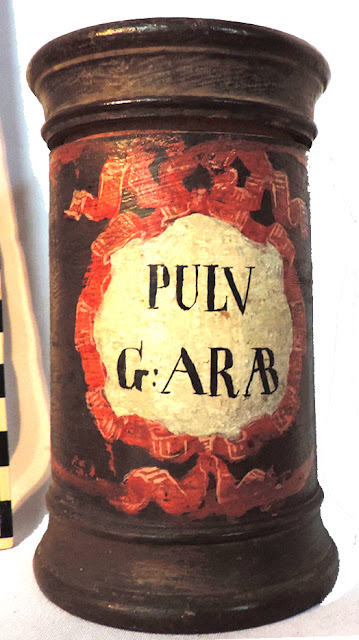Covering pills in gold and
silver was practiced in Europe between the
17th and 20th century, erroneously attributed to Avicenna. The procedure was
meant to make pills easier to swallow, coating their bad taste/smell and
preventing them from disintegrating. Though Avicenna did talk about the
properties of precious metals, in cauterizing, heart and lungs afflictions and
bad breath, the first mention of pill gilding dates from 1626.
The procedure included the
following steps: producing hard pills, coating them in syrup of Gum Arabic,
placing them together with gold leaf inside a scatula deauratoria (two hemispheres made
of wood or horn) and shaking well.
The History of Pharmacy
Collection in Cluj-Napoca
includes several jars for Gum Arabic, a natural gum made of the hardened sap of
various species of the acacia tree. One such jar, made of wood during the
eighteenth century and used in an apothecary shop from Târgu Mureş is exhibited in the
"Gold and gems" temporary exhibition that can be visited until the
end of this year.
 |
| 18th c apothecary jar with painted cartouche and the signature PULV G: ARAB |
 |
| Gum Arabic pieces and powder, by Simon A. Eugster - Own work, CC BY-SA 3.0, https://commons.wikimedia.orgb/w/index.php?curid=48712562 |
 |
| Modern pills, gilded pills and gold leaf in the "Gold and gems" temporary exhibition in Cluj-Napoca |
















































